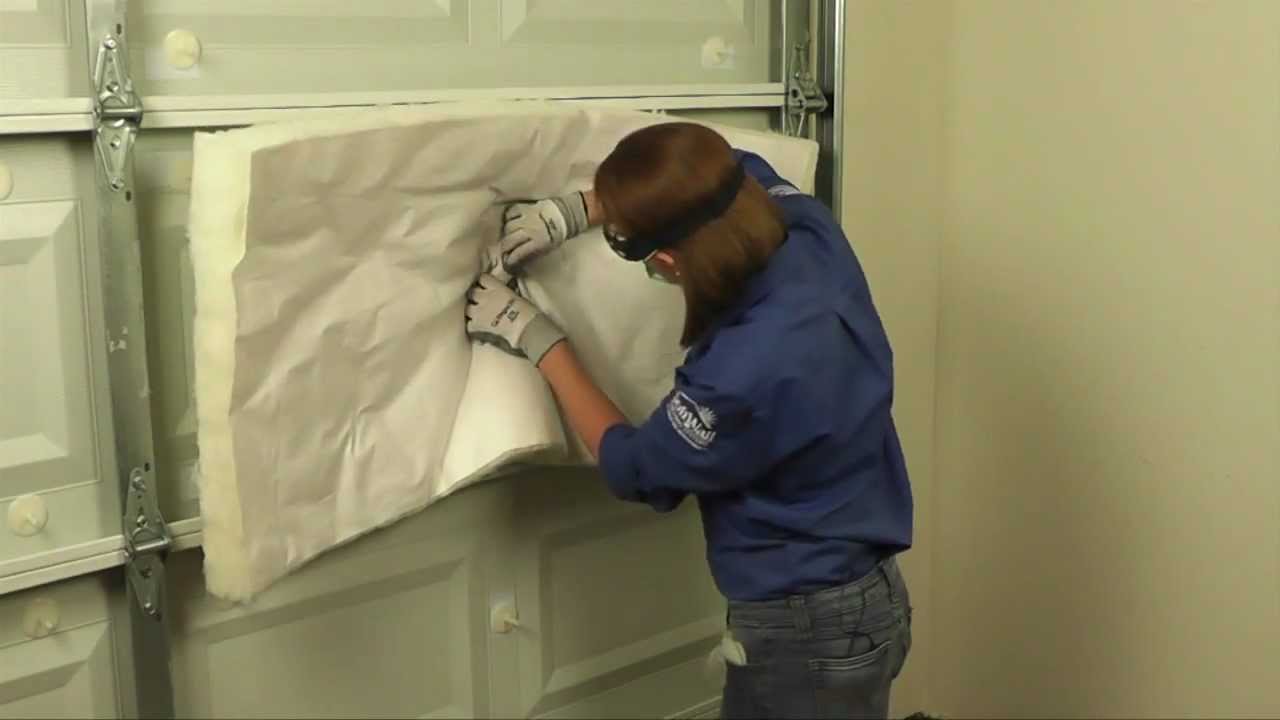Ah, winter is here! Brrr! And you know what that means – it’s time to winterize your garage door. Now, you might be wondering, “What’s the best method for garage door winterization?” Well, my friend, you’ve come to the right place! I’ve got some tips and tricks up my sleeve that will keep your garage cozy and protected from the harsh winter weather. So, grab a hot cup of cocoa and let’s get started!
When it comes to winterizing your garage door, there are a few key steps you should take. First up, weatherstripping. This simple yet effective method involves sealing any gaps or cracks around your garage door to prevent drafts and heat loss. Trust me, it’s a game-changer when it comes to keeping the cold air out and the warm air in.
Next, let’s talk insulation. Adding insulation to your garage door is a fantastic way to increase its energy efficiency and keep those winter chills at bay. And don’t worry, it’s not as complicated as it sounds – there are plenty of easy-to-install insulation kits available that will do the trick nicely.
Last but not least, don’t forget about maintenance. Regularly maintaining your garage door, especially during the winter months, is crucial for smooth operation and longevity. From lubricating moving parts to inspecting cables and springs, a little TLC goes a long way in ensuring your garage door stays in tip-top shape.
So, my friend, now you know the best method for garage door winterization. It’s all about weatherstripping, insulation, and regular maintenance. With these tips in your toolbox, you’ll be ready to face the winter chill with confidence. Stay warm, stay cozy, and keep that garage door working like a charm!
1. Inspect weatherstripping and replace if damaged.
2. Apply lubrication to moving parts for smooth operation.
3. Seal any gaps or cracks with weatherproofing adhesive.
4. Install insulation panels to enhance thermal efficiency.
5. Check the balance of your door and adjust if necessary.
By following these steps, you can ensure your garage door is well-equipped to withstand the winter weather and maintain energy efficiency in your home. Stay warm!

Best Method for Garage Door Winterization: Protecting Your Home from the Cold
Winter can be harsh on your home, especially when it comes to your garage. The freezing temperatures, snow, and ice can cause damage to your garage door if it’s not properly prepared. In this article, we will explore the best methods for garage door winterization to protect your home from the cold. By following these techniques, you can ensure that your garage door operates smoothly during the winter months and prevents any potential issues.
Why Is Garage Door Winterization Important?
Before we delve into the best methods for garage door winterization, let’s understand why it is so important. The garage door is often the largest moving component of your home, and it plays a crucial role in keeping your home safe and secure. During the winter, extreme cold temperatures can cause the components of your garage door to contract, leading to potential malfunctions and even damage. Additionally, the buildup of ice and snow can interfere with the smooth operation of the door, causing it to get stuck or operate inefficiently. By properly winterizing your garage door, you can prevent these issues and ensure its optimal performance.
Inspect and Seal Any Gaps or Cracks
One of the first steps in winterizing your garage door is to inspect it thoroughly for any gaps or cracks. Cold air can easily enter through these openings, reducing the overall efficiency of your garage insulation and increasing your energy bills. Use a flashlight to check the perimeter of your garage door, paying close attention to the bottom seal, weatherstripping, and corners. If you notice any gaps or cracks, use a sealant or weatherstripping to fill them. This will help to prevent cold drafts and keep your garage insulated, ensuring that the temperature inside remains stable.
Additionally, check the bottom seal of your garage door for any signs of wear or damage. Over time, the rubber seal can become worn or cracked, allowing cold air and moisture to infiltrate. If necessary, replace the bottom seal with a new one to ensure a tight seal and prevent any potential problems during the winter months.
Lubricate Moving Parts
During the winter, the cold temperatures can cause the lubricants used on the moving parts of your garage door to thicken or even freeze. This can lead to sluggish operation, increased wear and tear on the components, and potential malfunctions. To prevent this, it is important to lubricate the moving parts of your garage door before the cold weather sets in.
Start by cleaning any debris or dust from the tracks, rollers, hinges, and springs of your garage door. Once the surfaces are clean, apply a silicone-based lubricant specifically designed for garage doors. Avoid using grease or oil-based products, as these can attract dirt and grime, leading to clogs and further damage. Apply the lubricant generously to all moving parts, ensuring smooth operation during the winter months.
Regularly lubricating your garage door throughout the winter season is also essential. To prevent any issues, set a reminder to lubricate the moving parts every two to three months or whenever you notice any signs of sluggish operation.
Insulate the Garage
Another important aspect of garage door winterization is insulating the garage itself. Proper insulation not only helps to maintain a more comfortable temperature inside the garage but also reduces heat loss, saving energy and lowering heating costs. Insulating your garage can also prevent the cold air from seeping into your home through common walls shared with the garage.
There are several insulation options to consider, depending on your budget and preferences. Insulating the garage door itself is a cost-effective option that can significantly improve its overall insulation performance. You can install insulating panels or DIY insulation kits that are specifically designed for garage doors. These kits are readily available at most home improvement stores and come with all the necessary materials and instructions for installation.
In addition to insulating the garage door, consider insulating the walls and ceiling of your garage. This can be done with fiberglass batts, foam boards, or blown-in insulation. If you have an attached garage, insulating the shared walls between the garage and your home is crucial to prevent temperature transfer and maintain a comfortable indoor environment.
Protect Against Moisture
Moisture is another concern during the winter months, as it can lead to mold, mildew, and damage to your garage door. To protect against moisture, start by cleaning the door thoroughly and removing any dirt or debris. Pay special attention to the bottom portion of the door, as this is where moisture tends to accumulate.
Applying a protective sealant or paint specifically designed for garage doors can further help to prevent moisture damage. Look for products that offer water resistance and UV protection to ensure long-lasting results. Consider using a paint sprayer for a smooth and even application.
In addition to sealing the door, it is important to address any sources of moisture in your garage. Ensure proper ventilation by installing vents or fans, and fix any leaks or plumbing issues that may be contributing to excess moisture. By taking these steps, you can minimize the risk of moisture-related damage and protect both your garage door and the contents of your garage.
Additional Tips for Garage Door Winterization
Clear Snow and Ice Regularly
During the winter, it is important to clear any snow or ice that accumulates on or around your garage door regularly. Snow and ice buildup can interfere with the smooth operation of the door and potentially damage the components. Use a snow shovel or snow blower to clear the snow, and use ice melt or salt to prevent ice formation.
Use Garage Door Insulation Kits
If you’re looking for a more comprehensive insulation solution, consider using garage door insulation kits. These kits provide additional insulation for your garage door and are easy to install. They typically consist of insulating panels or reflective insulation that can be attached to the inside of the garage door.
Invest in a Garage Door Weather Seal
A garage door weather seal is an additional barrier against cold drafts and moisture. It is installed between the bottom of the garage door and the floor, creating a tight seal that helps to keep out cold air and prevent drafts. Weather seals are available in different materials, such as rubber or vinyl, and can be easily installed with adhesive or by sliding them into a retainer.
Keep the Garage Door Closed
During the winter, it’s important to keep your garage door closed as much as possible to prevent cold air from entering. This will help to maintain a consistent temperature inside the garage and reduce heat loss. Avoid leaving the garage door open for an extended period, especially during periods of extreme cold, snowstorms, or high winds.
Regularly Check and Maintain the Garage Door
Year-round maintenance is essential to keep your garage door in optimal condition. Regularly inspect the door for any signs of damage, worn-out parts, or malfunctioning components. Address any issues promptly to prevent further damage and ensure the continued smooth operation of the door.
In conclusion, winterizing your garage door is crucial to protect your home from the cold and prevent potential damage. By following these best methods, such as inspecting and sealing gaps, lubricating moving parts, insulating the garage, and protecting against moisture, you can ensure the optimal performance of your garage door throughout the winter months. Additionally, following the additional tips provided will further enhance the overall winterization of your garage door and help to keep your home comfortable and energy-efficient. Stay warm and secure with a well-prepared garage door this winter!
Key Takeaways: What’s the best method for garage door winterization?
- Proper insulation helps to keep your garage warm and prevent energy loss.
- Sealing any gaps or cracks will block cold air from entering your garage.
- Regularly lubricating moving parts ensures smooth operation even in colder temperatures.
- Installing weatherstripping around the garage door prevents drafts and improves insulation.
- Consider using a garage door insulation kit for added protection against the cold.
Frequently Asked Questions
In this section, we will answer some commonly asked questions about the best methods for garage door winterization.
1. How can I prevent cold air from entering my garage through the door?
One effective method to prevent cold air from entering your garage is by installing weather stripping. Weather stripping is a material that is placed along the edges of the garage door to create a seal. It prevents drafts and helps maintain a more comfortable temperature inside the garage. Additionally, you can seal any gaps or cracks in the garage door with caulk or silicone to further minimize air leakage.
Another way to prevent cold air from entering your garage is by insulating the garage door. You can purchase insulation kits that are specifically designed for garage doors. Installing insulation on the garage door helps to increase its thermal efficiency and keeps the cold air out.
2. What should I do to protect my garage door during winter?
To protect your garage door during winter, it is important to keep it clean and well-maintained. Regularly remove any debris, such as leaves or snow, from the tracks and hinges. This prevents them from getting clogged or frozen, which can damage the door. Lubricate the moving parts of the garage door, such as the springs and rollers, with a silicone-based lubricant to ensure smooth operation even in cold temperatures.
In addition, make sure to check the weatherstripping and replace it if it is damaged or worn out. Inspect the garage door for any signs of damage, such as cracks or dents, and repair them promptly. Taking these preventive measures will help prolong the lifespan of your garage door and keep it functioning properly throughout the winter.
3. Should I keep my garage door closed during winter?
It is generally advisable to keep your garage door closed during winter to prevent cold air from entering your home and to maintain a more comfortable temperature inside the garage. When the garage door is open, it allows cold air to flow in, which can make the garage colder and affect the insulation of the adjacent rooms.
However, there are some situations where you may need to keep the garage door partially open for ventilation, such as when you are using certain tools or equipment that generate exhaust fumes. In such cases, make sure to close the garage door as soon as you are done to minimize heat loss.
4. Can I use a space heater in my garage during winter?
Yes, you can use a space heater in your garage during winter, but it is important to take certain safety precautions. Ensure that the space heater is properly ventilated and placed away from any flammable materials. Do not leave the space heater unattended and always follow the manufacturer’s instructions for safe usage.
It’s worth noting that while a space heater can provide temporary warmth, it may not be sufficient to heat a large garage. Consider other heating options, such as an electric garage heater or a radiant heating system, for more effective and efficient heating.
5. How often should I check the balance of my garage door during winter?
During winter, it is a good idea to check the balance of your garage door at least once a month. Cold temperatures can affect the smooth operation of the garage door, causing it to become unbalanced. An unbalanced garage door can put strain on the opener and other components, leading to premature wear and potential malfunctions.
To check the balance of your garage door, disconnect the opener and manually open the door halfway. If the door stays in place, it is balanced. If it starts to close or open on its own, it may be unbalanced and require adjustment. Contact a professional garage door technician to adjust the balance and ensure the door operates smoothly throughout the winter.

Summary
So, to wrap things up, when it comes to winterizing your garage door, there are a few key points to keep in mind. First, make sure to clean and lubricate your garage door to prevent any rust and ensure smooth operation. Secondly, check the weatherstripping and replace any damaged or worn-out seals to keep the cold air out. Lastly, consider using insulation to improve energy efficiency and protect your belongings from extreme temperatures. By following these simple steps, you can keep your garage door in good shape throughout the winter season. Stay warm and take care of your garage!
Remember, it’s important to regularly maintain your garage door to ensure its longevity and functionality. By taking the time to winterize your door, you can save energy, prevent potential problems, and keep your garage a comfortable space even during the coldest months. So, don’t forget to give your garage door some attention before winter arrives!

